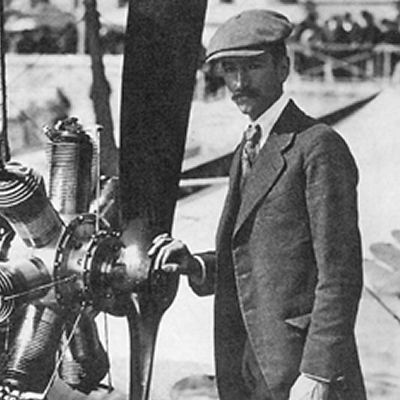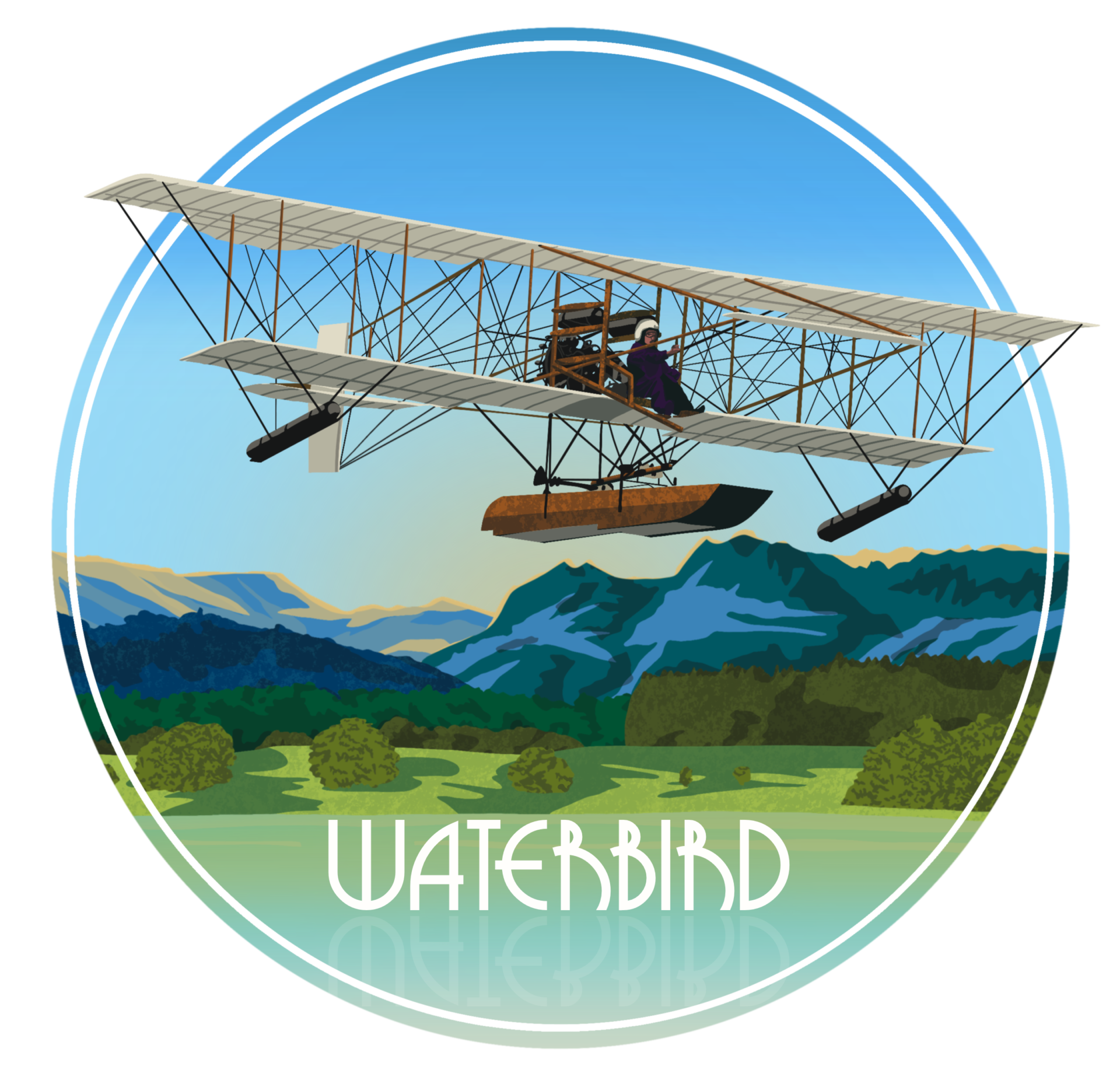Henri Fabre (1882 – 1984)

On 28 March 1910, Henri Fabre flew his Hydravion, also known as Le Canard, from Etang de Berre, near Marseilles, so achieving the first successful flight in the world from water. All the more remarkable since he had never been on an aeroplane before, either as a passenger or as a pilot.
Edward Wakefield had visited him at Marseilles shortly before the first flight. Wakefield did so again, this time in the company of Oscar Gnosspelius, on 26 October 1910 at the Grand Palais, Paris where Fabre’s aircraft was being exhibited – See photo at the top of this page.
The Hydravion was transported by using a dolly.
Like Waterbird, which was commissioned by Wakefield from A. V. Roe & Co, the Hydravion had a Gnome 50 hp engine. Its installation ‘was recommended by Laurent Seguin, the inventor and a relative’. – Rear Admiral L McCready, W.W.1 Aero, September 1983.
A diagram of the airframe is here.
Fabre’s floats were flat-bottomed, with a curved upper surface, so as to generate lifting force either in the air or on water; in contrast to Wakefield’s floats which were ‘stepped‘.
In 1910, the Hydravion was flown by Louis Paulhan. Paulhan designed a biplane landplane using the Fabre-type of construction for the wings, but by March 1911 that construction had been abandoned in favour of conventional main spars.
On 12 April 1911, at Monaco, Fabre’s aeroplane was damaged beyond repair when flown by Jean Bécu. Nevertheless, it was restored and since 1920 has been at the Musée de L’air, Le Bourget Airport, Paris. This photo was taken in 2009 by Denis J Calvert.
Fabre sold a Hydravion to Raoul Badin, one of his employees. Badin attempted to fly it from lac d’Enghien, near Paris. (In 1911, Badin invented an airspeed indicator, which became known simply as the ‘Badin’.)
– Whatever may be said as to whether the Hydravion was of a ‘normal‘ type, Fabre deserves great credit for not only proving it was possible to fly from water when others had failed but also for the design of his floats. Significantly, Wakefield (twice), Gnosspelius and Glenn Curtiss all went to visit him prior to their float successes.
– Pioneer Gabriel Voisin described it as ‘an admirable machine, designed with the greatest care and made like a masterpiece’. – Men, Women and 10,000 kites.
– P Lissarrague concluded in an article for Pegase magazine, March 1980 [as translated] that it was perfectly researched and calculated, remarkably well-constructed, equipped with a series of very ingenious devices which classed it amongst the best achievements of the time.
